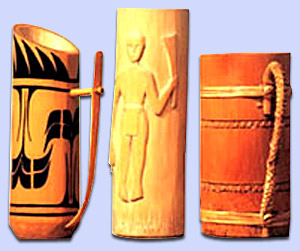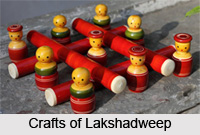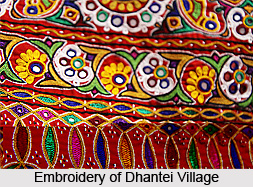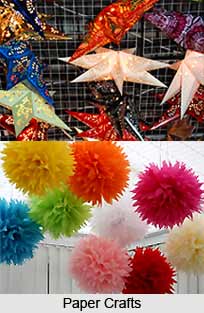 Paper Craft is a fairly old tradition in India. In this, three dimensional items are crafted using paper as the primary artistic medium. Paper Craft is the summation of a variety of simple techniques, including cutting, gluing, stitching, moulding and layering, to create beautiful objects. In India, the paper industry is located mainly in Patna, Delhi, Rajgir, Awadh, Ahmedabad, Gaya and Shahzadpur (near Allahabad).
Paper Craft is a fairly old tradition in India. In this, three dimensional items are crafted using paper as the primary artistic medium. Paper Craft is the summation of a variety of simple techniques, including cutting, gluing, stitching, moulding and layering, to create beautiful objects. In India, the paper industry is located mainly in Patna, Delhi, Rajgir, Awadh, Ahmedabad, Gaya and Shahzadpur (near Allahabad).
History of Paper Craft
Since paper is one of the easily perishable materials, the tradition of the paper craft had been left unrecorded. The earliest records available are in the form of a large number of beautiful manuscripts, `the royal farmans`, and account keeping by prosperous merchants in the Mughal period. The industry was however indigenous and small scale to cater the local needs. The people engaged in paper making could be found on the out skirts of provincial capitals or big towns. Their locality was known as the Kagazi Mohalla where `kagaz` refers to paper and `mohalla` refers to locality.
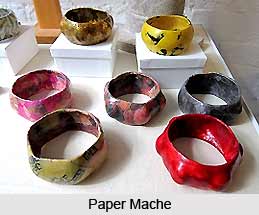 Different Paper Crafts
Different Paper Crafts
Paper Craft is an age old activity. Papers with their various varieties and wide range of colours offer a very colourful choice to the craftsmen. The combination of various kinds of papers in different forms and styles make Paper Craft one of the best crafts of India. The Paper Craft in India has widely been used in different types of decorations. The decorations may be in forms of flowers, kandeels, kites and effigies. General decorations in the religious and social functions are also comprised of mainly this art. Paper Craft includes a wide range of artefacts ranging from utilitarian to decorative items. Varying from simple to complex, a number of techniques are involved in their crafting. `Khamp`, a thin bamboo strip, is sometimes used to give skeletal support to the Paper Crafts. Depending on the size, the number of bamboo strips may change. An excellent example of this type of Paper Craft are Kites that are generally made by fixing a square paper on diagonal bamboo strip and a curved strip covering the upper part of the diagonal. `Tazia` is another Paper Craft and is an important icon in Muharram ceremonies. Making of `Tazia` involves construction of huge bamboo minarets covered with paper. The effigies and other fire works made during Dussehra festival are also beautiful manifestations of Paper Craft. These are meticulously filled with explosives to produce sparkle, sound and light. Apart from this, other objects of Paper Crafts involve masks, bowls, paper puppets, decorative birds, paper flowers and paper fans.
Paper Mache
Paper Mache or Papier Mache is one of the unique crafts that developed during the Mughal era and is still being practiced by a lot of craftsmen all over India. The articles are prepared by paper; often in combination with textiles, and are bound with different adhesives. The articles crafted with Paper Mache are used for household activities and decorative purposes. In ancient times, this craftwork was used to make paper boats, paper masks, paper observatory domes and paper sabots. Nowadays carnival floats, effigies, puppetry and lamps are exquisite illustrations of this art. Paper Mache finds extensive utility in theatres too. War time uses of Paper Mache include military drop tanks and combat decoy.
Among all the craftworks in India, Paper Craft has acquired a distinct position owing to its simple yet unique style. Apart from taking up this craftwork as a profession, it is also practiced as a hobby or a fun way of passing time by many people. Immense creativity can be explored and exhibited in this craftwork and the variety of articles that can be created always remains endless.



